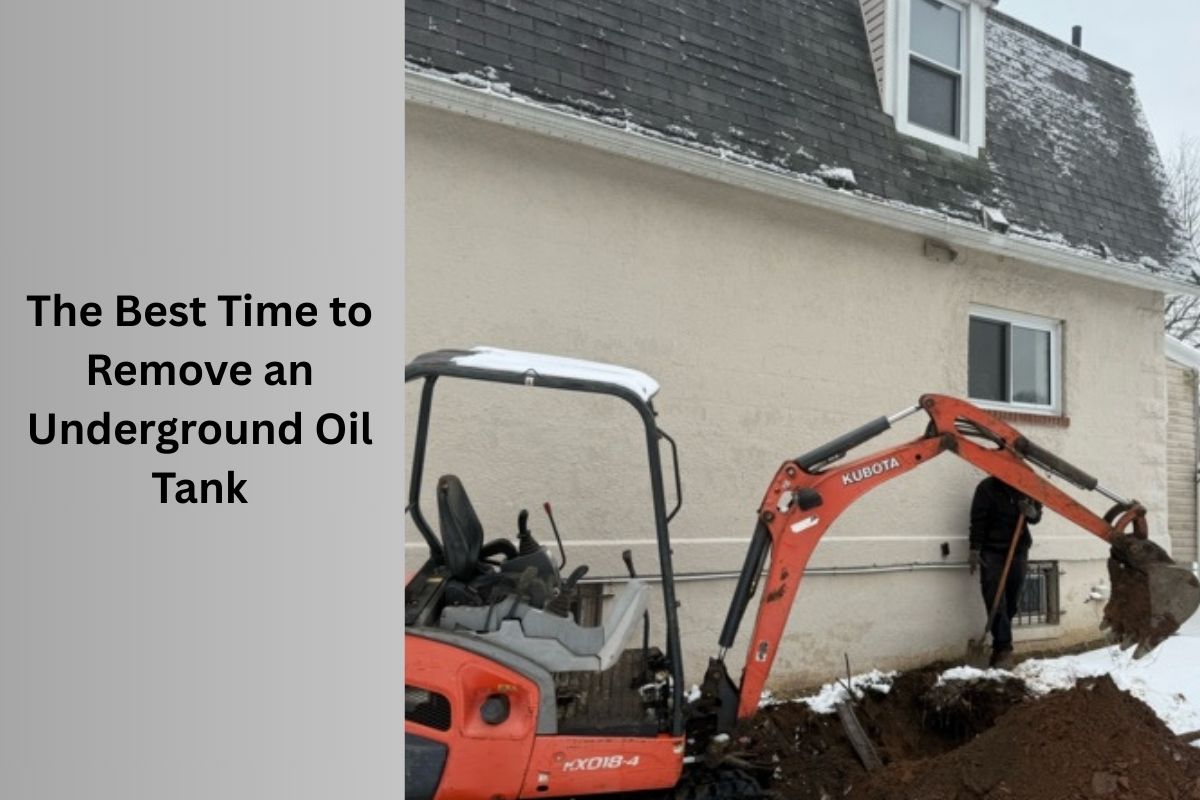Underground oil tanks were once a common feature in homes and commercial properties, serving as a fuel source for heating systems. However, as environmental concerns and property risks associated with these tanks have increased, many homeowners and business owners are choosing to remove them. But when is the best time to remove an underground oil tank? Timing is crucial, as it can impact costs, environmental safety, and regulatory compliance. This blog will explore the best time to undertake underground oil tank removal to ensure a smooth, cost-effective, and safe process.
Why Timing Matters for Oil Tank Removal
Removing an underground oil tank is not a simple task. It requires careful planning, professional expertise, and adherence to local regulations. Choosing the right time for removal can help you:
Avoid environmental hazards – A leaking oil tank can contaminate soil and groundwater.
Reduce costs – Emergency removals or winter removals may cost more due to unfavorable weather and difficult excavation conditions.
Ensure compliance – Certain regulations and permits may require action within a specific timeframe.
Prevent property devaluation – A hidden or damaged tank can affect property value and delay real estate transactions.
Best Seasons for Underground Oil Tank Removal
Spring and Summer: The Ideal Seasons
Spring and summer are considered the best times for underground oil tank removal. The weather conditions are more favorable, making excavation easier and reducing the risks associated with removal. Here’s why:
Milder Weather Conditions: Warmer temperatures allow the ground to remain soft, making it easier for excavation crews to dig and remove the tank without excessive labor costs.
Longer Daylight Hours: Contractors can work more efficiently with extended daylight, leading to quicker project completion.
Lower Risk of Delays: Unlike winter, where snow and frozen ground can create delays, spring and summer generally provide a stable work environment.
Better Scheduling Availability: Many contractors have more availability during these seasons, allowing you to schedule removal at a convenient time without urgent fees.
Fall: A Good Alternative
If you miss the opportunity to remove your oil tank in the spring or summer, fall is still a reasonable option. While temperatures begin to drop, the ground is not yet frozen, making excavation possible. However, waiting too long into late fall can bring unpredictable weather, which might lead to delays or additional costs.
Winter: The Least Favorable Time
Winter is generally not recommended for underground oil tank removal unless it is an emergency. The challenges of removing an oil tank during winter include:
Frozen Ground: Excavation becomes much harder when the ground is frozen, leading to higher labor costs and potential equipment issues.
Snow and Ice: Adverse weather conditions can cause delays and safety concerns for workers.
Limited Contractor Availability: Fewer contractors may be available due to reduced operations during the cold months, potentially increasing costs.
Emergency Fees: If the removal is urgent due to a leak or environmental concern, emergency fees may apply, making the process more expensive.
Signs That You Shouldn’t Delay Removal
While timing is important, certain situations require immediate action, regardless of the season:
Leak Detection: If you notice oil odors, discolored soil, or an unexplained increase in heating oil usage, the tank may be leaking.
Real Estate Transactions: If you plan to sell your home or buy a property with an underground oil tank, removal or testing should be done promptly to avoid complications.
Regulatory Compliance: Some local laws may require removal within a specific timeframe, especially if the tank is old or abandoned.
Insurance Concerns: Some insurance companies refuse to cover properties with underground oil tanks due to liability risks.
Final Thoughts
The best time to remove an underground oil tank is during spring or summer when weather conditions are optimal, and contractor availability is higher. Fall is a good alternative, but winter removal should be avoided unless absolutely necessary. No matter the season, if you suspect a leak or are involved in a property transaction, it’s best to act quickly.
Hiring a Simple Tank Services ensures that the process is handled safely and in compliance with local regulations. If you have an old or unused underground oil tank on your property, don’t wait—schedule a consultation today to plan for a safe and timely removal.

